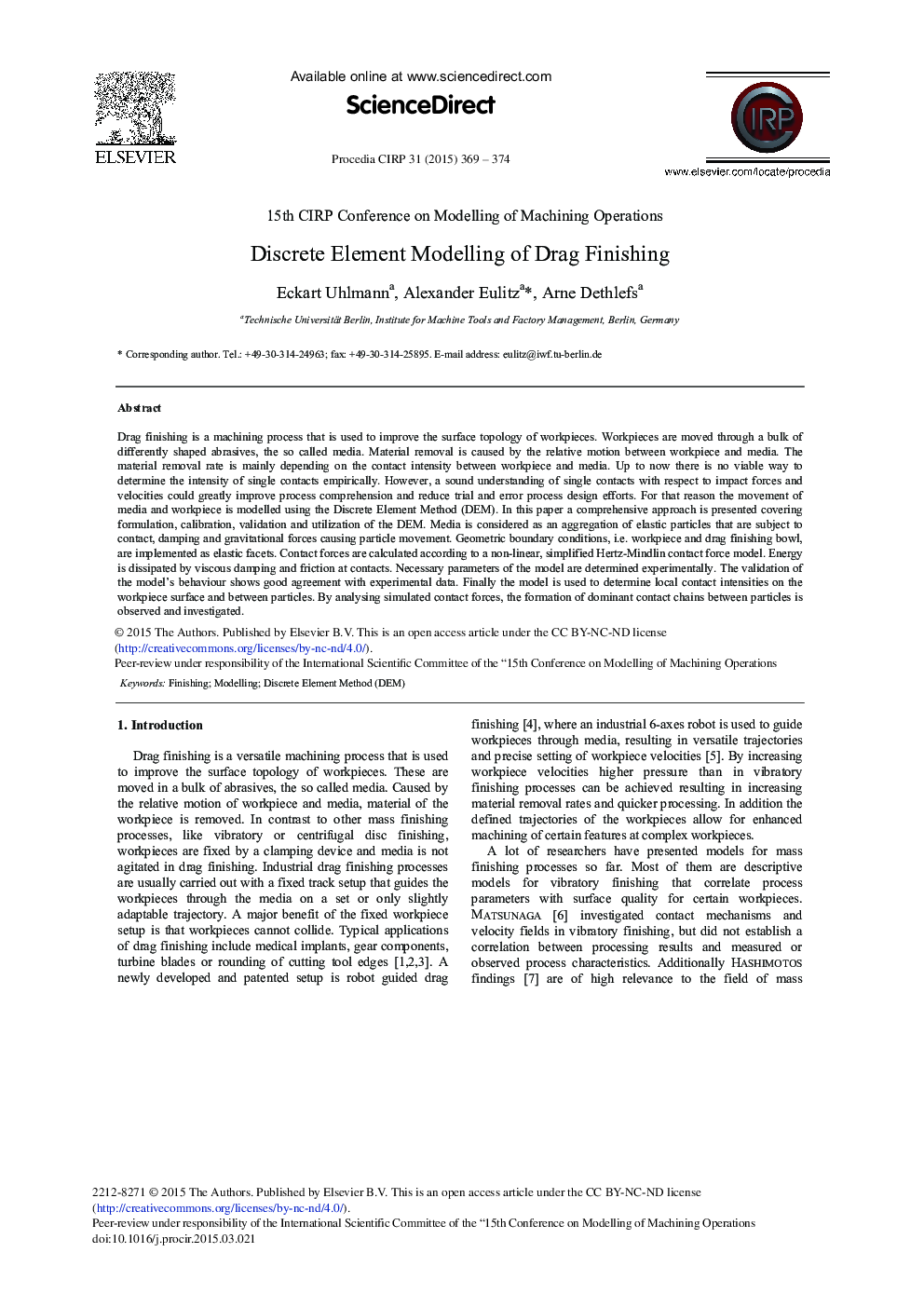| کد مقاله | کد نشریه | سال انتشار | مقاله انگلیسی | نسخه تمام متن |
|---|---|---|---|---|
| 1699664 | 1519321 | 2015 | 6 صفحه PDF | دانلود رایگان |
Drag finishing is a machining process that is used to improve the surface topology of workpieces. Workpieces are moved through a bulk of differently shaped abrasives, the so called media. Material removal is caused by the relative motion between workpiece and media. The material removal rate is mainly depending on the contact intensity between workpiece and media. Up to now there is no viable way to determine the intensity of single contacts empirically. However, a sound understanding of single contacts with respect to impact forces and velocities could greatly improve process comprehension and reduce trial and error process design efforts. For that reason the movement of media and workpiece is modelled using the Discrete Element Method (DEM). In this paper a comprehensive approach is presented covering formulation, calibration, validation and utilization of the DEM. Media is considered as an aggregation of elastic particles that are subject to contact, damping and gravitational forces causing particle movement. Geometric boundary conditions, i.e. workpiece and drag finishing bowl, are implemented as elastic facets. Contact forces are calculated according to a non-linear, simplified Hertz-Mindlin contact force model. Energy is dissipated by viscous damping and friction at contacts. Necessary parameters of the model are determined experimentally. The validation of the model's behaviour shows good agreement with experimental data. Finally the model is used to determine local contact intensities on the workpiece surface and between particles. By analysing simulated contact forces, the formation of dominant contact chains between particles is observed and investigated.
Journal: Procedia CIRP - Volume 31, 2015, Pages 369-374
